Photos
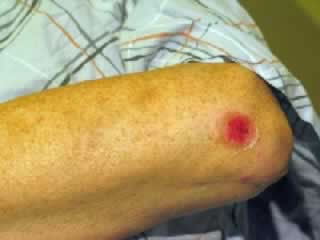
Abrasion on Elbow
This picture shows a shallow scrape on the left elbow.
First Aid Care Advice for Minor Scrape:
- Apply direct pressure for 10 minutes to stop any bleeding.
- Wash the area with soap and water.
- Gently scrub out any dirt with a washcloth.
- Apply an antibiotic ointment, covered by an adhesive bandage or dressing. Change daily.
- Another option is to use a Liquid Skin Bandage that only needs to be applied once. Avoid ointments with this.
Source: Self Care Decisions, LLC
Used with Permission from Schmitt Pediatric Guidelines LLC.
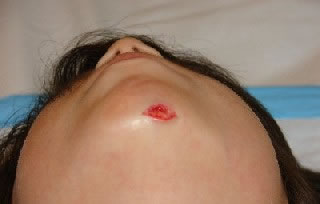
Chin Laceration
This photo shows a gaping laceration (cut) of the chin. It will require closure with either sutures or skin glue (such as Dermabond).
First Aid Care Advice:
- Apply direct pressure for 10 minutes to stop any bleeding.
- Wash the cut with soap and water.
- Once the bleeding has stopped, cover with a gauze dressing or adhesive bandage.
Source: Self Care Decisions, LLC
Used with Permission from Schmitt Pediatric Guidelines LLC.
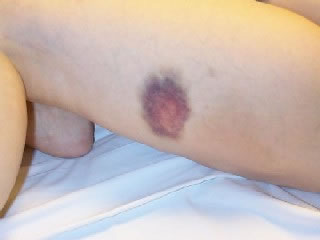
Bruise on Thigh (1 Day Old)
This bruise is one day old.
Bruising occurs when the blood vessels burst and cause blood to collect in the tissue.
Source: Self Care Decisions, LLC
Used with Permission from Schmitt Pediatric Guidelines LLC.
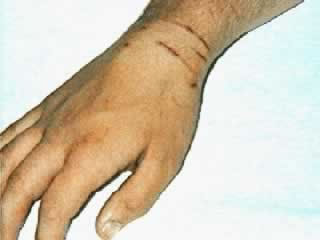
Scratches from a Cat
The photo shows 3-4 parallel scratches on the wrist caused by a cat.
First Aid Care Advice:
- Wash the scratches with soap and water.
- Apply an antibiotic ointment twice daily.
- Watch closely for signs of infection, especially the first 1-3 days. Signs of infection include fever, redness or tenderness or pus at the scratch site.
Source: Self Care Decisions, LLC
Used with Permission from Schmitt Pediatric Guidelines LLC.
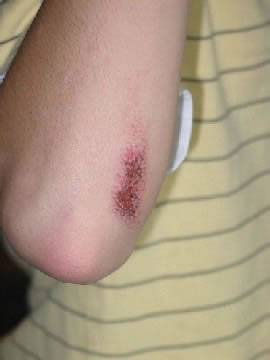
Abrasion on Elbow (3 Days Old)
This scrape (abrasion) near the elbow occurred 3 days ago. The picture shows a scrape that is starting to crust over.
There are no signs of infection (such as spreading redness, pus).
Source: Self Care Decisions, LLC
Used with Permission from Schmitt Pediatric Guidelines LLC.
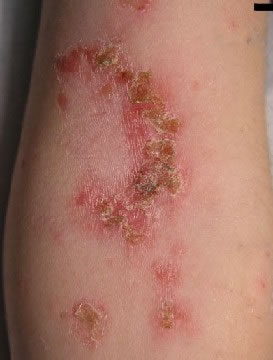
Impetigo of Elbow
This shows impetigo on the elbow. Impetigo is a skin infection caused by bacteria. The infection causes a red sore which leaks fluid. This area will then dry and become crusty as it heals.
Source: Wikimedia Commons
Permission is granted to copy, distribute and/or modify this document under the terms of the GNU Free Documentation License. This is a public domain image file from Wikimedia Commons. Wikimedia is a freely licensed media repository.